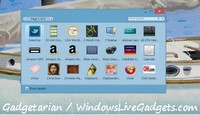MS Word auto hyphens, hyphen shortcuts, m and n dashes
You may have defined in Word the strongest possible hyphenation zone, yet without achieving ideal results: some words that could be broken remain intact, leaving a rather large amount of blank space in the previous line.
Do not just press the Minus key to add a hyphen: such hyphens remain even when you change your text and they are not needed anymore. Add an auto hyphen by pressing Ctrl+Minus. This hyphen disappears automatically when there is no need for a word to be hyphenated.
Pressing Ctrl+Shift+Minus inserts a non-breaking hyphen, i.e. a hyphen that will keep both parts in the same line. This hyphen doesn’t regard the layout of a page but the meaning of a word (as in self‑organized, self‑made, etc.), and it won’t disappear unless you delete it.
If you have assigned hyphen shortcuts to other tasks in Word or globally, you need to reconfigure them. Go to Insert > Symbol > More > Special Characters and customize their shortcuts. While you are there you may like to check and customize the keyboard shortcuts for inserting other common symbols, such as the ©opyright or §ection marks.
Note also this difference between hyphens and m— or n– dashes. Usually mdashes separate meanings, while ndashes indicate ranges such as 5–7. “m” stands for “double n”, meaning that mdash is double the size of ndash.
